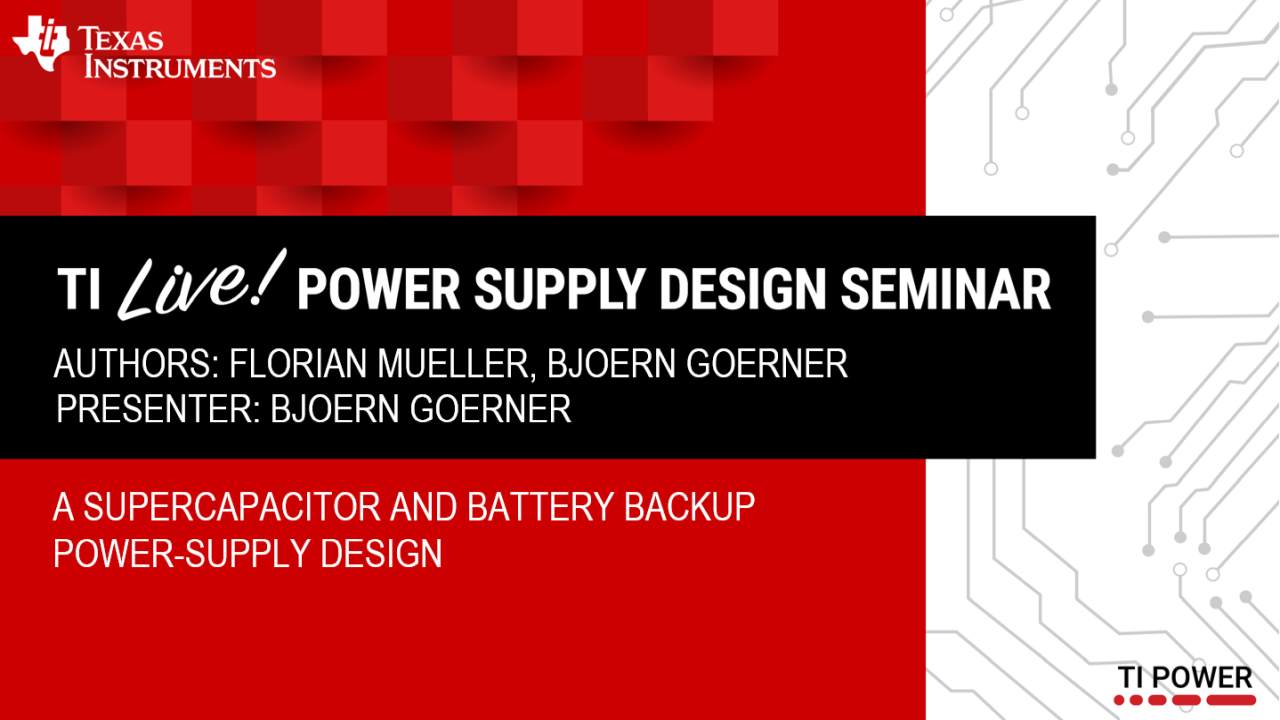nibblie
Newbie

I'm building a device that is normally powered from a 3V battery, but I want the device to keep running for some seconds if the battery is suddenly removed. The current draw is quite small, about 1 mA (including a 50ms 10mA peak). The solution I've come up with is to use a supercapacitor. I must detect when the battery is removed, but I'm not sure how to do that in an efficient way. This is what I have right now, but a diode is not really acceptable here because of the voltage drop.
1. Is there a way to implement the detection more power efficiently?
This is the supercap I'm considering:
No info about leakage current, but I'm guessing (hoping) <1uA after it's been charged up, since more than 4uA is not acceptable.
2. Is it OK to connect a supercapacitor directly like this? Or is a charging circuit required?

(This is just a sketch, so no bypass cap, and unconnected pins...)
1. Is there a way to implement the detection more power efficiently?
This is the supercap I'm considering:
No info about leakage current, but I'm guessing (hoping) <1uA after it's been charged up, since more than 4uA is not acceptable.
2. Is it OK to connect a supercapacitor directly like this? Or is a charging circuit required?

(This is just a sketch, so no bypass cap, and unconnected pins...)



